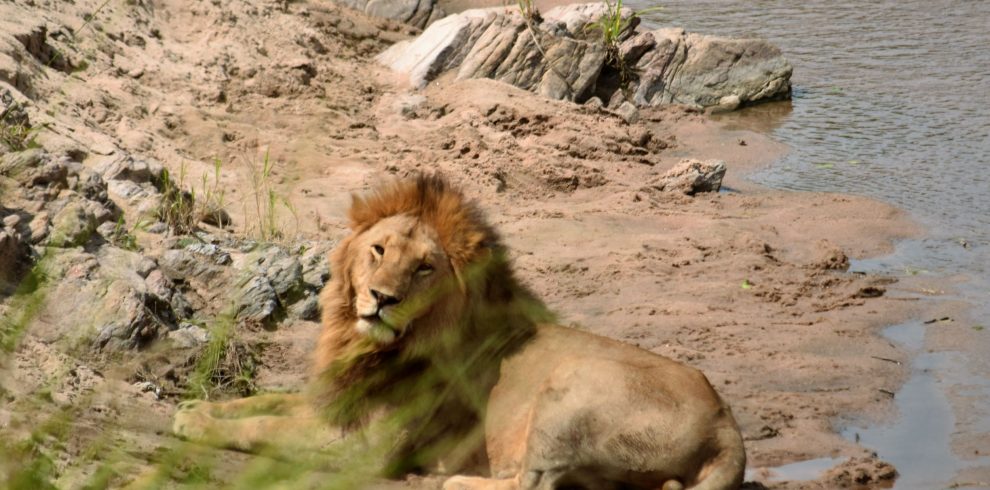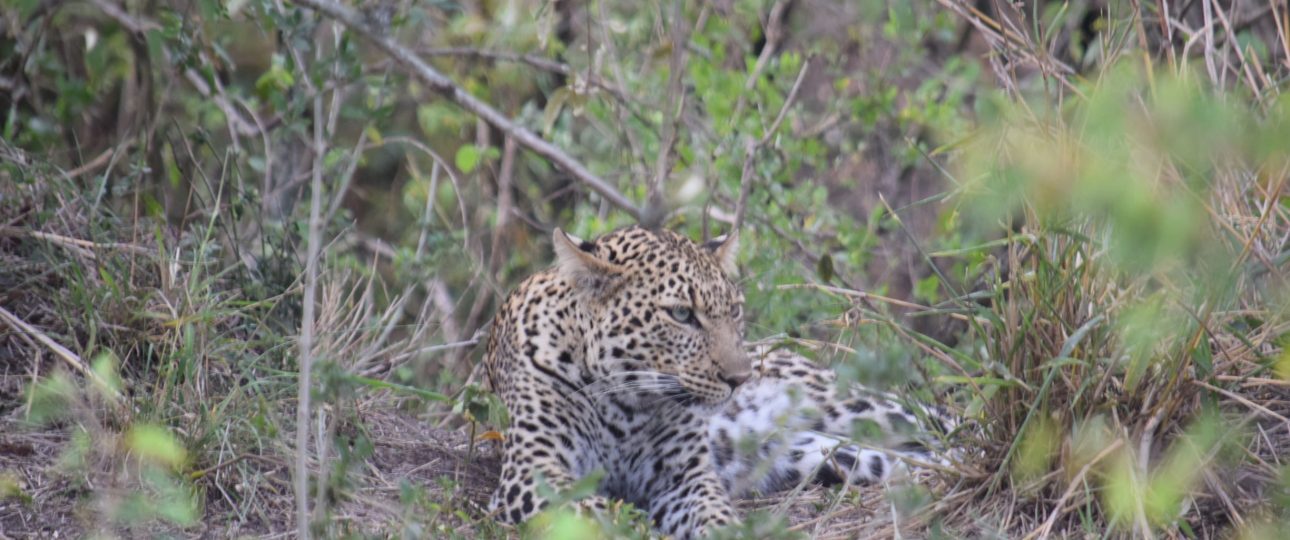Samburu National Reserve is the main part of Northern Kenya that attracts visitors in significant numbers, this trio of ecologically affiliated and unfenced reserves collectively protect 440 sq km (170 sq miles) of semiarid savannah flanking the Ewaso Nyiro River. The ecology of Samburu Kenya is defined by the contrasting habitats of riverine forest along the Ewaso Nyiro and austere acacia scrub and rocky slopes extending outward from it.
The three reserves comprising of Samburu Buffalo Springs, Shaba National Reserve and the Samburu National Reserve probably offer the best chance of sighting leopards in Kenya, and lions, elephants and buffalo are also quite common. The main attraction, however, is a host of dry-country specials absent or rare in most other East African parks. Among there are mammals, such as Beisa oryx and gerenuk, and a long list of birds of which the cobalt-chested vulturine guinea fowl is the most spectacular
Popular Tours to Samburu National park

Experience the ultimate adventure with this 7-day safari to the Masai Mara, Lake Nakuru, and Samburu National Reserve. Begin your…
Samburu National Reserve collectively forms a block to the west of the TransAfrica Highway, respectively running along the north and south banks of the Ewaso Nyiro. Most lodges are located along the north bank in Shaba National Reserve, but together with Samburu – Buffalo Springs, the two reserves are connected by a bridge near Samburu Game Lodge. Shaba lies east of the highway, on the south bank of the river. All three can be explored from each other, with Samburu- Buffalo Springs offering the best game viewing and Shaba the more untrammelled atmosphere.
Samburu National Reserve and Buffalo Springs National Reserve
Originally a single reserve in 1948, Samburu and Buffalo Springs were regazetted as separate entities in 1963. They are separated by the Ewaso Nyiro River and connected by a solitary low bridge in the west, close to the war den’s office and Samburu Game Lodge. The bridge may flood occasionally after heavy rain when the only safe crossing is on the main Trans-Africa Highway south of Archer’s Post. Normally, it is easy to cross between the two reserves for game drives, making it possible to explore Samburu National Reserve and Buffalo Springs in its entirety by using a single lodge as a base. The dirt roads within the park are in good condition, but a 4WD may be essential after the rains, particularly on the loose sandy soils that characterize the eastern plains of Buffalo Springs.
Ewaso Nyiro River
The centrepiece of Samburu National Reserve is the Ewaso Nyiro river, which rises in the Aberdares and arcs through the Laikipia Plateau (see pp322–5) before eventually emptying into the expansive Lorian Swamp in Kenya’s remote northeast. Although it has been known to cease flowing in very dry years, the river is essentially perennial and its name, which means muddy water or brown water, refers to the rich red-brown topsoil it carries down from Laikipia. Within the reserves, the river supports a lush ribbon of palm-studded riparian forest that contrasts pleasingly with the surrounding aridity.
In the dry season, it forms the most important source of drinking water for miles around, and mammal concentrations in Samburu Kenya and Buffalo Springs National Reserve tend to be far higher at this time than after the rains when the wildlife dispenses deep into the desert and meets its drinking needs there using temporary pools. For visitors with limited time, the well-maintained tracks that run parallel to both the north and south banks of the river are undoubtedly the most rewarding focus for game drives. Hippo and crocodile are resident and easily seen, as are a host of water-associated birds such as the African fish eagle, African spoonbill, water thick-knee, yellow-billed stork and chestnut-bellied kingfisher. The riverine vegetation also attracts plenty of elephants and buffalo. Waterbuck, Burchell’s zebra and reticulated giraffe are common, and flocks of orange-bellied parrots often attract attention with their lively screeches.
Samburu National Reserve has a reputation for guaranteed leopard sightings among all wildlife reserves and parks in Kenya based largely on the fact that several lodges used to bait these elusive creatures with fresh meat. This practice has now been outlawed on ecological grounds. The individual leopards that used to benefit from it remain habituated to people and vehicles, as do their offspring, and the odds of an extended leopard sighting are better here than in any other part of Kenya. The best place to look for them is in Buffalo Springs, following the network of tracks that run through the riparian forest on the south bank of the river. Good sightings can sometimes be had in Samburu, on the north bank.
Ol Doinyo Koitogorr
Samburu National Reserve protects a far more undulating terrain than Shaba or Buffalo Springs. The skyline is dominated by the impressive 1,250-m- (4,100-ft-) high Ol Doinyo Koitogorr. The rocky slopes here support a tangled cover of dry thorn scrub, dominated by stunted acacia trees, their branches laden with untidy nests built by buffalo weaver and sparrow-weaver colonies. These are interspersed with impressive termite towers that stand taller than a person, and often host colonies of the endearing dwarf mongoose, or provide a stage for brightly coloured pairs of D’Arnaud’s or red-and-yellow barbet to perform their striking duets. Wildlife concentrations are lower away from the river, but the emphasis is on species associated specifically with the badlands of Northern Kenya.
The rubber-necked gerenuk is common here, and family parties are often seen foraging on acacia canopies. Pairs of the diminutive Günther’s dik-dik scurry twitchnosed along the roadside, and larger antelope such as eland, impala, lesser kudu and Grant’s gazelle are also very visible – the last with much larger horns than the more southerly race of the Masai Mara and Serengeti. The area is good for cheetahs, too, but some luck is required for a decent lion sighting. This northern scrubland is especially rewarding for Samburu safari tours focused on the lookout for dry country birds.
Two of the more eye-catching species are the vulturine guinea fowl and yellow-throated spurfowl, both of which spend much of their time scurrying around on the ground along the margins of the road. Also, a common sight are the blue-legged Somali ostrich, the localized Egyptian vulture and the dazzlingly colourful gol den pipit and Golden-breasted starling. Somewhat more drab, but no less interesting to serious birdwatchers, are such dry-country endemics as the Abyssinian scimitar-bill, black-capped social weaver, white-headed mousebird, Somali bee-eater and bristle-crowned starling.
Buffalo Springs and the Southern Plains
Flatter and more lightly vegetated than its northern counterpart, Buffalo Springs National Reserve is characterized by thin claylike soils that support a cover of open grassland interspersed with low greyish stands of whistling thorn and isolated flat-topped umbrella thorns. Grevy’s zebra, Beisa oryx and Grant’s gazelle seem especially drawn to this open environment. It is also good for a number of large ground birds such as the comically eyelid fluttering ground hornbill, the mincing secretary bird and a variety of bustards, including the kori bustard, a contender for the accolade of the world’s heaviest flying creature. The more common predators are present in small numbers, with cheetah and striped hyena being something of a local speciality.
Away from the river, the game-viewing centrepiece worth a visit on you Samburu tour the eponymous springs in the east of the reserve near Buffalo Springs Shimba Lodge. There are in fact three springs, although the largest is hidden behind a nondescript concrete wall from where sprouts a trio of tall palm trees. Another spring is used to feed a warm swimming pool, although swimming is no longer permitted. The third spring has been left as it is, and it forms a major magnet for thirsty wildlife in the dry season, leading to heavy overgrazing in the immediate vicinity. Whatever the season, groups of oryx and reticulated giraffe are almost always present, but buffalo are relatively scarce.
Shaba National Reserve
Gazetted as a reserve in 1974, Shaba made headlines in 1980 as the site of the murder of Joy Adamson, and served as the setting for the American reality show Survivor: Africa in 2001. More recently, the reserve attracted global attention when a resident lioness, nicknamed Kamuniak (Blessed One) by local Samburu, adopted a succession of half a dozen oryx calves over a two-year period. Despite being almost as large as Samburu and Buffalo Springs combined, Shaba has rather little wildlife, and Samburu Safari tours based at its solitary large lodge tend to conduct most game drives in Buffalo Springs. Tourist traffic is, therefore, very low, and visitors can often drive for hours through the magnificent semiarid scenery without seeing another vehicle.
As with Samburu-Buffalo Springs, the Ewaso Nyiro river is the major geographic feature in Shaba National Reserve. The river flows eastwards along the park’s northern boundary for some 35 km (22 miles) and supports a lush ribbon of riverine forest dominated by doum palms, sycamore figs, fever trees and camel thorns. One of the best access points is the Sarova Shaba Game Lodge on the western boundary. The verdant grounds of this lodge are fed by freshwater springs that run through a sequence of streams and ponds into the river, so the riverine forest here is especially luxuriant and rattling with monkeys, baboons and birds such as the handsome bristle-crowned starling. Numerous outsized crocodiles and monitor lizards frequent the shady southern banks of the river, and a variety of storks and smaller waders can usually be seen picking their way along the northern banks. Game-viewing roads east of the lodge also offer several views of the river.
Western Game-viewing Circuit
The main game-viewing loop to focus you Safari in Samburu – Shaba National Reserve is through the western half of Shaba entails following the main track east of the entrance gate for about 3 km (2 miles), then veering northeast along a series of tracks that run parallel to the river for about 16 km (10 miles) before cutting back south again to the main road at Dudubata Hill. It is a very scenic drive, with the palm-fringed river often visible, and the sheer basaltic cliffs of Ol Doinyo Sabache – site of a rare breeding colony of Rüppell’s vulture – rising to an altitude of 1,880 m (6,168 ft) above the northern bank.
Several hot springs rise in the area, but otherwise, the habitat is very open, consisting of a mosaic of lava-strewn plains, grassland and dry thornbush. A good variety of dry-country mammals are seen here, including Beisa oryx, gerenuk and Grant’s gazelle, but population densities are rather low. The birdlife, by contrast, is superb, with a strong emphasis on species associated with very dry habitats, such as coursers, sandgrouse and bustards, as well as the gorgeous rosy-patched shrike and Golden-breasted starling and the very localized masked lark. Visitors take at least 3 hours to cover this loop, more if they are serious about birds.
Eastern Game-viewing Circuit
The eastern plains of Shaba National Reserve are scenically reminiscent of the west, with the river and Ol Doinyo Sabache visible to the north and the 1,624-m- (5,350-ft-) high Shaba Hill dominating the southern horizon. However, this area is even more untrammelled, thanks to its relatively remote location. A major landmark is a campsite where Joy Adamson raised the heroine of her last book, a leopard called Penny, and where she was murdered in 1980.
Originally adorned with a simple memorial plaque, this is now the site of an exclusive tented lodge called Joy’s Camp (see p371) overlooking a spring-fed waterhole that attracts a steady stream of buffalo, reticulated giraffe, elephant, Grevy’s zebra and lion. The untidy fields of black lava that characterize this harsh landscape are home to the ultra-localized Williams lark. Further afield, it is possible to make a day trip following the Ewaso Nyiro river for about 32 km (20 miles) beyond the park’s eastern boundary to the remote Chanler’s Falls, named after William Astor Chanler, the American explorer.
The Samburu People
Samburu National Reserve is named after the Samburu people, close cultural affiliates of the Maasai, with whom they share a common language called Maa. The two tribes migrated together from their original homeland in Ethiopia or Sudan but split near the Turkana area in the 17th century, with the Samburu settling on the fringe of the Central Highlands and northern deserts, and the Maasai continuing southwards. Pastoralists by tradition, the Samburu people cling staunchly to the ways of their forefathers. The social system is based around three male age-sets, namely ilayoik, uncircumcised boys who tend livestock, ilmoran, circumcised warriors who defend the clan, and ilpayiani, elders who are responsible for administration and law-making. For the Samburu, the idea of God is strongly associated with large mountains, and elders are customarily buried facing such a location.
Archer’s Post
Straddling the main road between Samburu National Reserve, Buffalo Springs and Shaba National Reserves, Archer’s Post is an important trading centre for the Samburu people of the region, whose colourful traditional attire stands in striking contrast to the arid surroundings. The village offers campers the last chance to stock up on basic foodstuffs before they enter the park, and even boasts a couple of basic guesthouses and eateries aimed at safari drivers but occasionally used by intrepid backpackers.
While informal interaction with the Samburu is likely for visitors spending time in Archer’s Post, the small town is also surrounded by semi-formal cultural villages aimed at Samburu National Reserve Tours with an interest to learn more about traditional Samburu ways. Village visits of this sort are the one occasion when photographing the normally camera shy Samburu is tolerated. These visits generally culminate in an exciting display of singing, the ululation and pogo-style dancing – a memorable addition to any safari, and one that ensures some of the money generated by tourism goes straight to grassroots communities.

